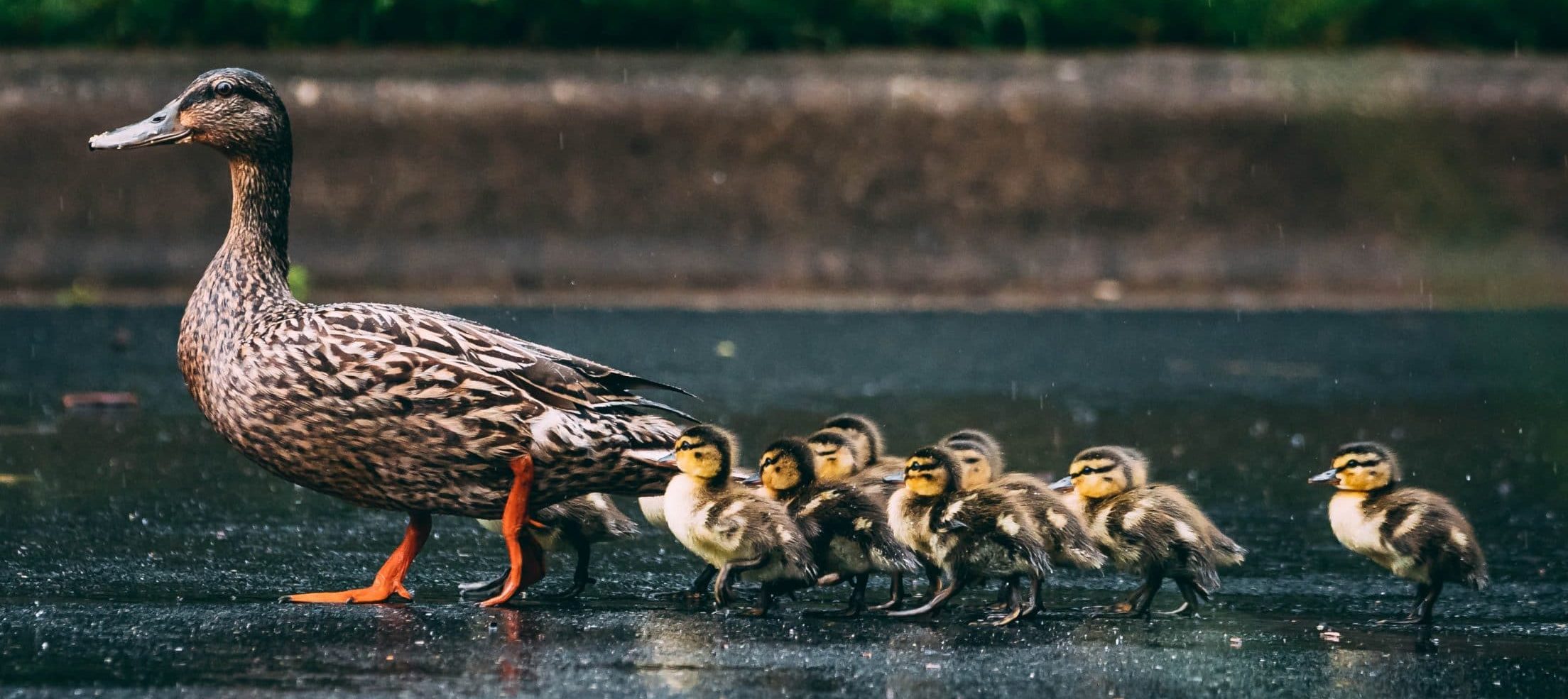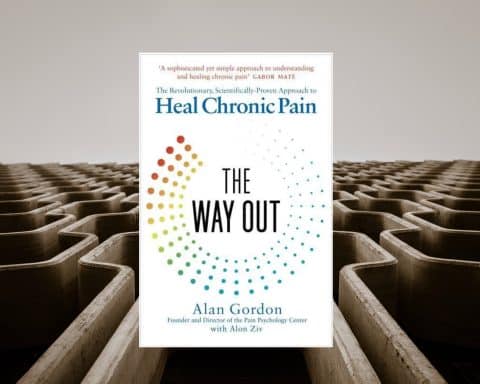 Louise Hyde is a GP in Wales and DAUK committee member @DAUK_GP @MeddygLou
Louise Hyde is a GP in Wales and DAUK committee member @DAUK_GP @MeddygLou
This article has been corrected and updated with a link to data provided by FullFact (See bottom of article for full details)
Children are not meant to die, so when people say the risk of a child dying of Covid-19 is very small, then yes, it absolutely should be.
Unfortunately, we’ve been letting Covid spread quite freely in the UK, especially through schools.
My child probably won’t die of Covid, and yours probably won’t either, but in the next few days, someone’s child might.
We actively take precautions to prevent all of the commonest causes of child death, both as individuals and collectively.
Suffocation causes similar numbers of deaths to Covid, but no parent would leave plastic bags lying about, and almost all bags come with little holes punched in the bottom, and a written reminder to keep out of reach of children.
When it comes to Covid, though, the measures we had in place through the first two waves have largely been removed. Most adults in the UK are protected by at least two doses of vaccine, but most children are not. Masks stopped being required in English secondary schools in May, at roughly the same time that the Joint Committee on Vaccination and Immunisation (JCVI) were concluding that “there was a low risk of child-to-child transmission”. Measures such as bubbles, distancing and isolation of covid contacts have also been removed or weakened since then, with predictable results.
For most of last term school aged children had the highest prevalence of Covid, and whenever schools are open, the rates tend to rise.
With the arrival of Omicron in the lead up to Christmas, schoolchildren were overtaken by young adults, extending up to the middle aged. Now that the new term has started, older age groups seem to have peaked, but schoolchildren and preschoolers continue to rise.
It has become clear that JCVI guidance suggesting the vaccine would only have minimal benefits for children was based on false assumptions. Children can and do transmit the virus when basic mitigation measures are removed.
Similar patterns were seen in South Africa and New York, but it is still too early to say whether this increase in hospitalisation will translate into increased child mortality rates. The rates of Long Covid from Omicron are also still unknown.
Currently the UK lags behind similar nations in vaccinating children. The JCVI was slow to authorise vaccination of 12-15 year olds, initially only permitting a single vaccine.
The MHRA has approved a reduced dose vaccine for 5-11 year olds, but the JCVI are currently limiting its use to children who are Clinically Extremely Vulnerable (CEV) or have CEV members in their household. Even these few are struggling to actually access the vaccine, with reports of some families taking their children abroad to receive it. In contrast to the original adult vaccination campaign, and the booster programme this winter, vaccination of children has remained painfully slow. If vaccines are to be our main defence against covid, we need to step up the pace.
With school transmission driving the pandemic during term time, the rates of covid in parents and grandparents also tend to rise. The vaccine is very effective for most people, but it has a small but significant failure rate and not everyone can or will have it. If we choose to rely on vaccines alone, with rates this high, the virus will find those who
are susceptible.
For children with a clinically vulnerable parent or grandparent, the worry that they might bring Covid into the home is often their biggest fear. Children naturally tend to assume that bad things happening in the adult world are their fault, even in situations where there is far less logic to suggest it. In the UK, there are already an estimated eight thousand children orphaned by Covid-19. Those who argue that being in school is the most important factor for our children’s mental health are neglecting to consider these children. There is a huge difference between children being safely in school with multiple layers of mitigation measures in place, and children being in school where they are exposed to the virus with no protection.
The measures we need to make schools safe are quite simple:
- Fast vaccine roll-out for all children aged 5 and up.
- Acceptance that airborne spread of the virus is significant, ventilation, FFP2 masks, CO2 monitors and HEPA filters.
- Awareness that close contact also plays a part, with physical distancing where possible.
- Awareness that the number of people you transmit to depends on how many people you share air with, bringing back bubbles, avoiding assemblies, and a return to fully isolating cases and contacts.
- Acknowledging that children are connected to the rest of the community too, and a return to similar measures across the rest of society to get background Covid rates down.
- Perhaps the most complex measure, the one we are least likely to achieve, is a change to the public messaging about Covid in the UK. Because infections really do matter. We are all connected, and we do have a responsibility towards each other, whether we like it or not. My choices and actions could have unknown consequences for you, or for someone else, somewhere.
Consequences may be unknown, but they are not unforeseen. And in the case of infectious diseases, even a small change can make a very big difference over time, so every little helps. The actions that are in our power are smaller and simpler than those our government could have chosen, but they are still significant.
Open a few windows, wear a mask, keep your distance, stay home when you’re ill. You’ll never find out, but your actions could avoid harm to a child.
Editorial note: This article was corrected on 5th February 2022 and misleading figures were removed after the figure of 133 child deaths was clarified as including 18 and 19 year olds by a FullFact article. We apologise for not spotting this mistake and correcting it sooner. We would like to thank FullFact for this and the work that they do and Leo Benedictus who wrote the article. We would also like to thank Samar Razaq and Helen Salisbury for independently contacting us about these figures. We welcome comments and critique on all our articles by letter, email and (ideally) the response box below all BJGP Life articles. We encourage our readers to read the FullFact article here https://fullfact.org/online/133-covid-deaths-children/
*References and Further reading
- Mortality data comes from the Office of National Statistics and can be viewed at www.ons.gov.uk
- Prevalence data comes from Independent SAGE https://www.independentsage.org/wp-content/uploads/2022/01/WeeklySlides_14January2022.pdf
- Data about child hospitalisations comes from Long Covid Kids https://www.longcovidkids.org/post/child-covid-19-cases-long-covid-hospital-admissions-deaths-16th-january-2022
- Minutes of the JCVI can be viewed at https://www.gov.uk/government/groups/joint-committee-on-vaccination-and-immunisation
Featured image by Vlad Tchompalov on Unsplash







Interesting article. You mentioned 133 children have died as a result of Covid-19. This seemed quite high on first reading. Can you clarify where this number is from? according the the ONS (https://www.ons.gov.uk/aboutus/transparencyandgovernance/freedomofinformationfoi/covid19deathsinukforchildrenfromages0to19sincemarch2020) up to May 2021 the number seems to be 13 in age group 1-15.
Another study (https://www.nature.com/articles/s41591-021-01578-1) quotes a figure of 25 deaths in the under 18 group between march 2020 and feb 2021
Also excess mortality (rather than mortality per se) is a more accurate indicator of the risk to children. It is interesting to note that during 2020 the mortality rate was the lowest on record since at least 2015 for the 1-15 age group
I assume the data she has quoted goes up to the time of writing. There have been another 10 or so since.
Your figures are very old. There have been a lot more deaths since Spring 2021, that’s nearly a year ago. The data for child deaths isn’t easy to find but it is out there.
https://coronavirus.data.gov.uk/details/download
Follow the link
Select area type “nation” and then area name “England”
Select the metric “newDeaths28DaysByDeathDateAgeDemographics”
Download the spreadsheet and filter the three age groups 0-4, 5-14 and 15-19.
You have to do the maths yourself – add up each death each day that one occurred.
This will give you the total child deaths JUST FOR ENGLAND.
Yes, exactly as Tom said, the data is there in the ONS, but you have to search the four nations separately and add it up for yourself. Or if you are on twitter you can follow @TigressEllie who has kept an ongoing tally throughout the pandemic using the ONS data. The total is now up to 145, sadly.
yes i agree those ONS charts are hard work and I have been looking at them for the last 2 years. I had a look at the twitter handle and it seems the number of 145 children deaths is coming from Covid mentioned on death certificate rather than Covid being the actual cause of death.
A more useful way to cut through the background noise is to look at all cause mortality in different years and this gives some interesting data. Following are the number of deaths in England and Wales in children aged 1-14 in the last 5 years ( I got these numbers by just manually adding up the rows on the ONS data)
2017 943
2018 961
2019 934
2020 832
2021 812
so total number of deaths in children in this age group has actually fallen over the last 2 years
Yes, that is interesting. Pure speculation but I wonder if fewer traffic accidents could be a factor, particularly during the lockdowns. I think RTAs are one of the very top causes of death, so a reduction in them could have a significant impact on the overall numbers.
I’m not sure if I agree with your use of the word “useful”, either, to be honest. If your aim is to prevent parents from unnecessary bereavements then looking at the breakdown of potentially preventable causes of death and working out strategies to limit the risk of them happening in future is far more “useful” than just taking the numbers as a whole. That’s why we have child death reviews. It is good to know, though, that child deaths continue to fall overall.
[…] opinion article in the British Journal of General Practice (BJGP) which claims “we’ve lost at least 133 […]
[…] opinion article in the British Journal of General Practice (BJGP) which claims “we’ve lost at least 133 […]
This article with its inaccurate data is now being quoted on Twitter. Please publish a correction with accurate data or retract this article altogether
Corrected and re-tweeted!
A corrected/updated article with a link to the fullfact article at the top and bottom is now being actively circulated. Thank you for your comment and thanks to everyone on this strand for an excellent discussion.
[…] opinion article in the British Journal of General Practice (BJGP) which claims “we’ve lost at least 133 […]
An opinion article in the British Journal of General Practice (BJGP) which claims “we’ve lost at least 133 children to Covid in the UK so far” has been shared on Facebook, and shared widely on Twitter, including by the Independent SAGE members Dr Kit Yates and Dr Zubaida Haque.
A child’s death is a tragedy in any circumstances, but this figure includes some people who were 18 or older when they died, as well as some whose underlying cause of death was not Covid-19.
Using the best alternative data available, covering deaths due to Covid in people aged under 18 in England and Wales, the correct figure is 50—though this figure only counts deaths registered to the end of December 2021, rather than those recorded until late last month.
Deaths in children due to Covid have sadly been higher in recent months than at any previous stage of the pandemic, but they remain extremely rare. There were eight deaths due to Covid in under-18s in England and Wales in December 2021, making it the most deadly month of the pandemic so far for children.
Why 133 deaths isn’t right
The opinion article in the BJGP was written by Dr Louise Hyde, a GP. It said: “Children are now dying of Covid regularly, at a rate of about 2 or 3 per week. In fact, we’ve lost at least 133 children to Covid in the UK so far.”
In a comment at the bottom of the article, a reader explained that this figure had been reached by adding together the total number of deaths in England within 28 days of a positive Covid test among people aged under 20. And Dr Hyde has confirmed to Full Fact that this was the method she used.
This method does produce a total of 133 deaths in England up to 29 January 2021, but there are two problems with calculating the total in this way.
Firstly, it includes 18- and 19-year-olds, who would not be defined as children by the General Medical Council. (It also includes 16- and 17-year-olds, who by some other medical definitions are not children either.)
Secondly, it counts all deaths within 28 days of a positive Covid test, which may include some that were not caused by the disease itself.
Death certificate data is better
The Office for National Statistics (ONS) publishes regular reports on the number of deaths due to Covid in people of different ages. This means that Covid was listed as the underlying cause on their death certificates by a doctor who was familiar with the case.
As we’ve said, the latest data for England and Wales shows that 50 people aged under 18 died of Covid where the death was registered by the end of December 2021. The figure for people aged under 20 was 71 deaths. For people under 16 it was 39 deaths.
We’ve not been able to find equivalent data for Scotland and Northern Ireland, but those two nations make up about 11% of the UK population, so they might contribute to a slightly higher figure for the whole country.
Eight deaths among people under-18 in December means that the rate was roughly two per week in that month, as the article suggested.
Dr Hyde told us: “The number I used was to the best of my knowledge at the time of writing, without having seen the death certificate data.” She also said: “I’d argue that to most parents their 19-year-old is still very much their ‘child’.”
Photo by Katie Harp on Unsplash
Source
On
February 4, 2022
By
WeRaven
Full Fact
Post navigation
Previous PostEstimates of heart condition prevalence in the UK isn’t linked to vaccines
My 14 year old nephew lost his second grandparent last week to this pandemic. (Since last Thanksgiving 3 generations, all vaxxed, tested positive, but his grandfather did not recover.) Everyone’s actions matter. Everyone matters. Children should not be put in this position. Children and others pay for our mistakes.
A GP has claimed at least 133 deaths because of Covid-19 in children, with many sharing this on Social Media. But when looking into the official numbers it would appeal the medic is misleading the public on child covid deaths. So what are the numbers?
Definition of a child?
The United Nations defines a child as every human being below the age of 18 years, while in a medical sense a paediatric ward covers children up to the age of 16. People aged 16 or over may consent to their own medical treatment like adults. The JCVI has also considered different age groups when determining the rollout of vaccines in the UK, treating those aged 16 to 17 differently to those at younger ages.
39 children aged 0 to 15 died due to Covid in England and Wales by end of 2021
Each month ONS publish the number of deaths in England and Wales where Covid-19 was the underlying cause, what most of us would understand as the primary cause of death. In addition, they include deaths where Covid-19 was not the primary cause, but mentioned on the death certificate, so a factor in the death.
Between March 2020 and December 2021 there were 39 deaths registered in children aged 0 to 15 with Covid as the cause of the death, with a further 10 where it was not the primary cause but a factor in the death. Extending the age group to 0 to 17, the numbers are 50 and 12, respectively.
March 2020 to December 2021 – England and Wales (Source: ONS)Age 0 to 15Age 0 to 17Covid-19 underlying cause of death3950Covid-19 not underlying cause but mentioned on death certificate1012
Each week ONS also publishes the number of deaths with Covid mentioned on the death certificate (including both the primary cause and a factor in the death). In 2022, to 21 January, there were 5 deaths among children aged 0 to 14. Data is not available yet for 0 to 15 or 0 to 17-year-olds.
These numbers cover England and Wales only and I cannot find data by single year of age and underlying cause for both Scotland and Northern Ireland. But we can compare the data ONS publish for the UK as a whole for those aged 0 to 14 with the same data for England and Wales, to assess how many further deaths there may be across the whole of the UK.
There were 41 deaths registered in England and Wales aged 0 to 14 with Covid mentioned on the death certificate up to the end of 2021, with 3 in Scotland and 1 in Northern Ireland, so the other 2 countries would add around 10% to the total numbers. Applying that to the table above, we would get 43 deaths because of Covid in children aged 0 to 15 or 55 in those aged 0 to 17.
99.4% of deaths in children since the pandemic not due to Covid
A child’s death is heartbreaking for every parent, but children die every day. Between March 2020 and December 2021, where there were 39 deaths in children across England and Wales because of Covid, there were 6,123 deaths from all causes. Covid itself did not cause 99.4% of deaths. As mortality is highest for children among infants (those under 1), looking only at those aged 1 to 15, Covid was not the primary cause of 97.8% of deaths.
Covid deaths in children represent 0.03% of total deaths over the pandemic
When looking at Covid deaths for every year of age on a chart, it is difficult to see many deaths in children because Covid-19 is a virus that predominantly attacks and kills the elderly. Almost 9 in 10 of all deaths because of the virus are among those aged 65 and over. Children aged 0 to 15 account for just 0.03% of the total number of Covid deaths across England and Wales, so it is rare for a child to die because of Covid.
Conclusion
Child Covid deaths are rare, but for each family who loses a loved one, it is a heartbreaking tragedy. Medics are misrepresenting death statistics because of Covid in children, and this misinformation instills fear in parents. To inflate the numbers to make the situation seem worse, they are including adults aged 18 and 19. They also include those where there was a positive test for Covid-19 regardless of the cause of death. It is better and more professional to focus on the statistics from death certificates quoted in this blog.
The same people are talking of record numbers of children admitted to hospital, but we have seen record numbers of people in the UK testing positive for Covid since the Omicron wave. My recent blog explains the total number of children in hospital is lower than before the Omicron wave.
Independent Sage scaremongering
The broadcaster and Independent Sage member, Professor Alice Roberts, tweeted statistics on both points mentioned in this blog – hospitalisations and deaths of children with Covid. The numbers of deaths because of Covid are higher than those in children aged 0 to 17 by around 147%. She failed to mention anything about the fact there are fewer children in hospitals since Omicron. She also made a plea to make vaccines available for 5 to 11-year-olds. The ONS data for January shows no deaths in children linked to Covid in 5 to 9-year-olds (the age group they publish).
With a following of over 340k on Twitter and a Professor, you would expect her to check the data before misinforming people on child covid deaths. But Independent Sage has throughout the pandemic often scared the public with doomsday scenarios that have regularly failed to happen. With a following of over 350k on Twitter and a Professor, you would expect her to check the data before misinforming people. But Independent Sage has continually scared the public with doomsday scenarios that have regularly failed to happen. She is a parent, and no doubt cares about children, but when looking at interventions to protect their health, you also need to look at the data accurately. To make informed choices, parents need to have facts, and not ones that mislead, be that deliberate or not.